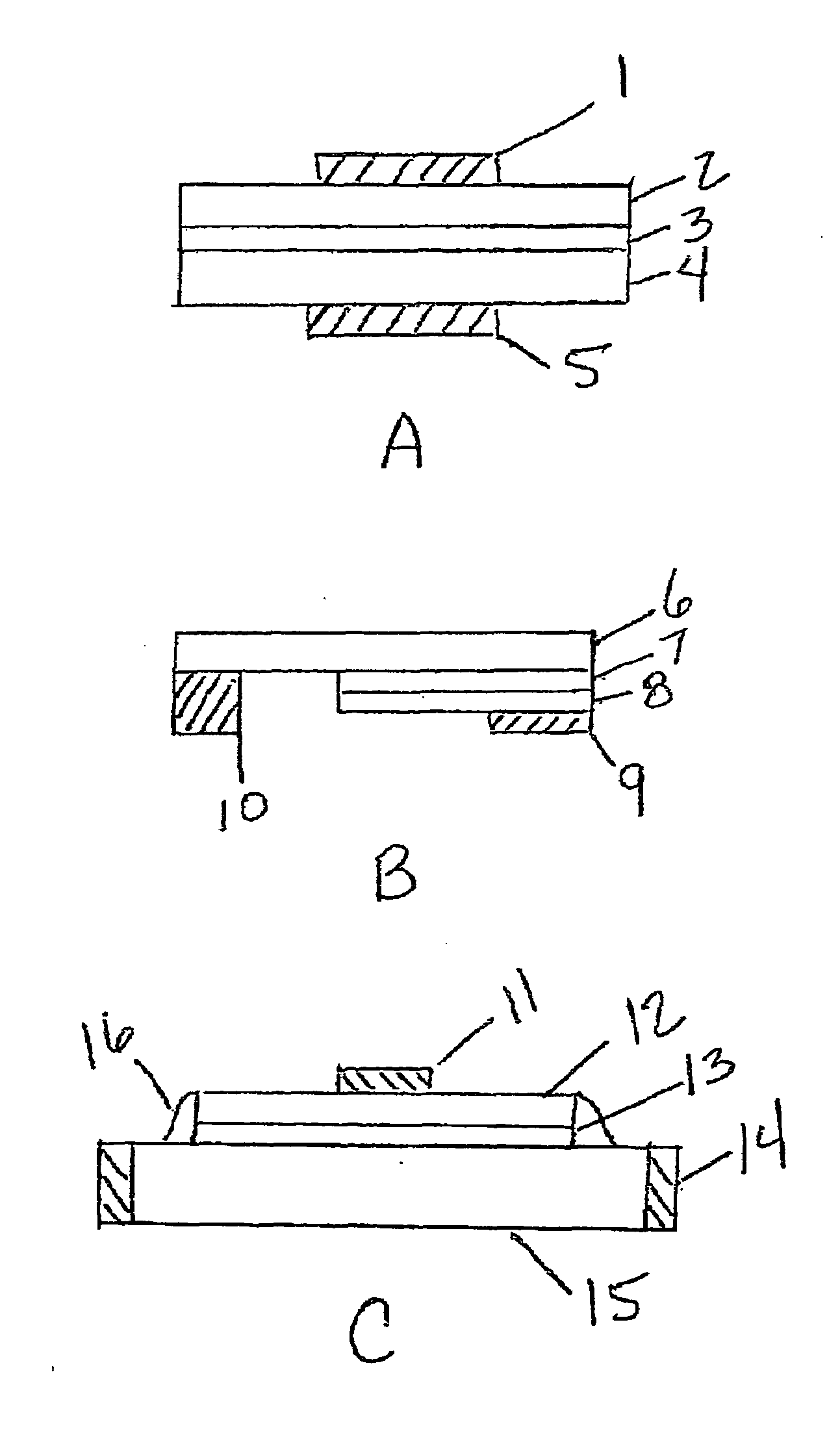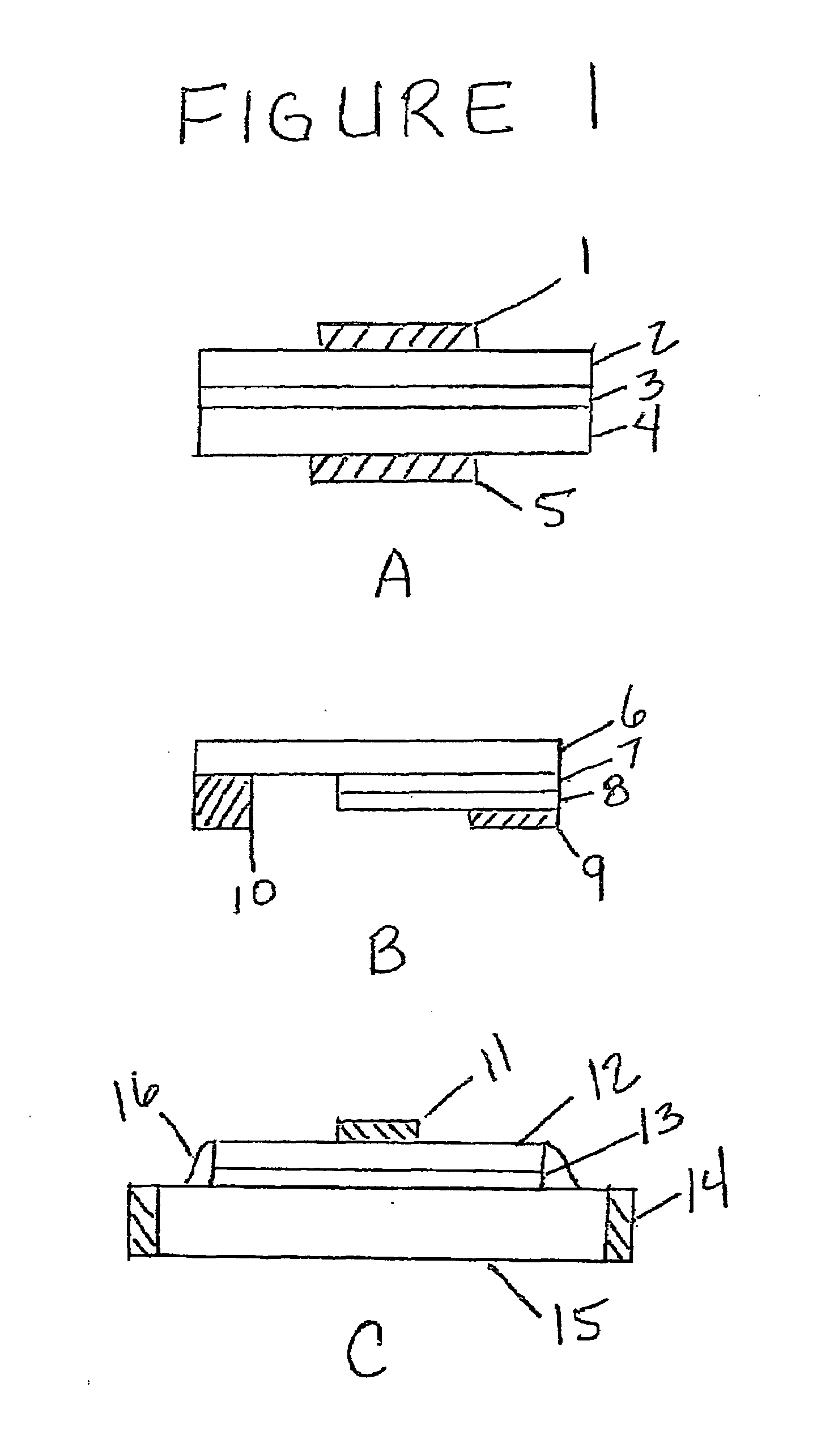LED display utilizing freestanding epitaxial LEDs
a freestanding, led display technology, applied in the field of display apparatuses, can solve the problems of display performance issues such as jitter, color gamut, stability, etc., and achieve the effects of enhancing orientation and/or performance, preventing shorting issues, and low cos
- Summary
- Abstract
- Description
- Claims
- Application Information
AI Technical Summary
Benefits of technology
Problems solved by technology
Method used
Image
Examples
Embodiment Construction
[0053]The LED addressable display is based on a freestanding epitaxial LED chip (Epichip). One method to fabricate these unique LEDs utilizes growing thick (10-100 micron) doped GaN on sapphire via HVPE, then growing PN junction & multiple quantum wells by MOCVD.
[0054]A method for fabricating mechanically robust, self-standing epitaxial layer LEDs is shown in U.S. patent application Ser. No. 12 / 148,894, commonly assigned as the present application and herein incorporated by reference. This process is modified slightly to fabricate LEDs for a printable display. A process for fabricating ultra thin epitaxial layer chips is described as follows: An epitaxial layer is first grown on a sapphire substrate to form a wafer. The epitaxial layer consists of an aluminum doped gallium nitride. The aluminum doped gallium nitride is grown in an epitaxial reactor using high vapor pressure epitaxy. A metal contact is deposited. This metal contact can be indium tin oxide, zinc oxide, carbon nanotube...
PUM
 Login to View More
Login to View More Abstract
Description
Claims
Application Information
 Login to View More
Login to View More - R&D
- Intellectual Property
- Life Sciences
- Materials
- Tech Scout
- Unparalleled Data Quality
- Higher Quality Content
- 60% Fewer Hallucinations
Browse by: Latest US Patents, China's latest patents, Technical Efficacy Thesaurus, Application Domain, Technology Topic, Popular Technical Reports.
© 2025 PatSnap. All rights reserved.Legal|Privacy policy|Modern Slavery Act Transparency Statement|Sitemap|About US| Contact US: help@patsnap.com



